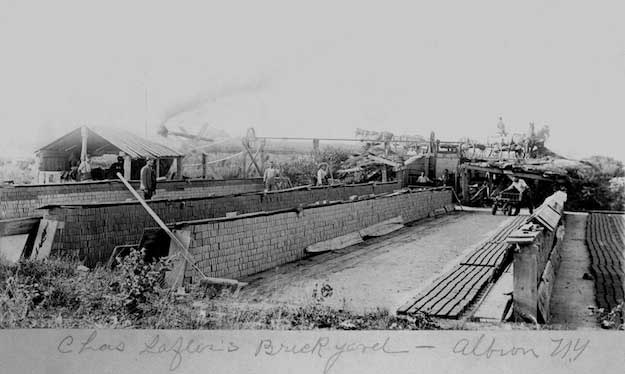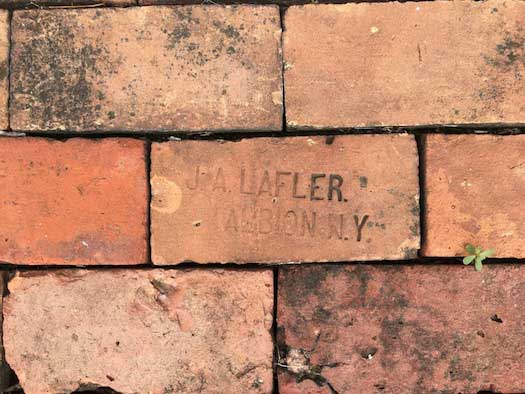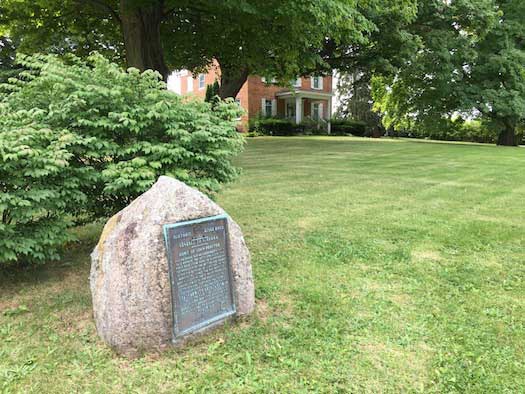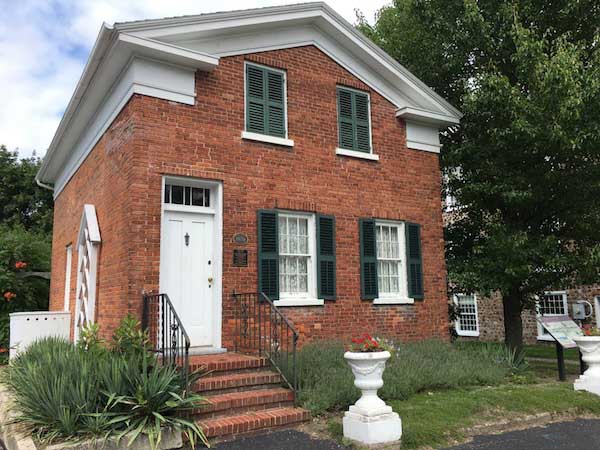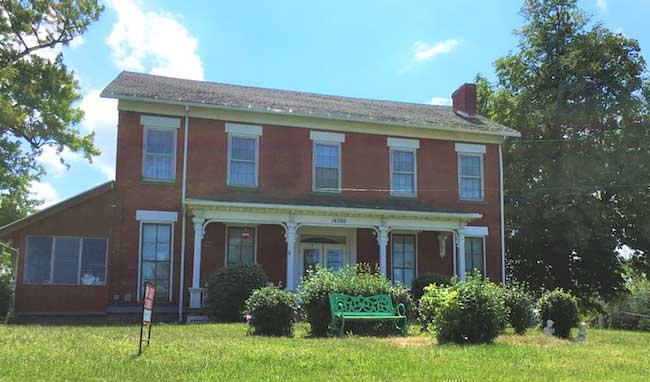Historic Childs: More than cobblestones in the hamlet with many brick buildings
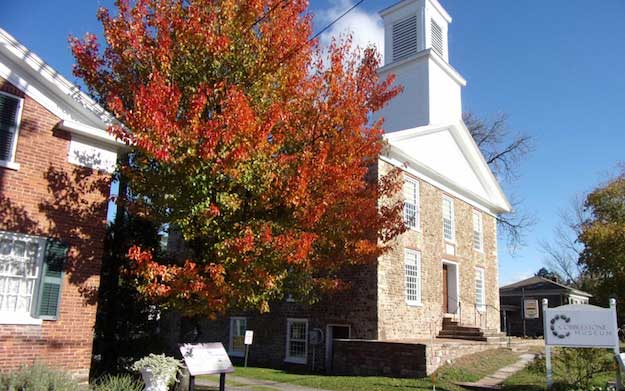
Provided photos: A brick building from 1836 was built next to the Cobblestone Universalist Church, which was erected in 1834. They remain next to each other on Rpute 104, just east of the intersection with Route 98.
(Editor’s Note: This is the sixth article in a series about historic Childs in the Town of Gaines. The hamlet of Childs lies just north of Albion at the intersection of Routes 104 and 98. In 2019, Childs was selected to be on the Landmark Society of Western New York’s “Five to Revive” list. In 1993, the federal U.S. Department of the Interior declared the Cobblestone Museum in Childs a National Historic Landmark, the first site in Orleans County with that distinction.)
By Doug Farley, Cobblestone Museum Director
When we think of buildings in the historic Hamlet of Childs, the mind is quickly drawn to the amazing cobblestone structures that are located there. But, perhaps equally interesting are the red brick structures that were built in the hamlet. Brick construction in Childs actually predates the advent of cobblestone masonry by almost a decade. There are brick homes here that date back to the 1820s, and the first cobblestone building was the Gaines-Basin schoolhouse built in 1832.
We know of three brickyards that operated in the vicinity of Childs including the Laffler brickyard at the site of the current Brick Pond on Route 98 near Route 104, and another at the intersection of Routes 279 & 104 and a third owned by William Babbitt at Route 104 & Crandall Road which was actually the first brickyard in the area established about 1820.
The Laffler Brick Yard had a storied history that included some game-changing technology for the time. Laffler built and patented an Iron Clad Brick Machine that changed brickmaking from a hand pressing process to mechanical. His invention was said to produce 2,000 to 3,000 bricks per hour. Enough bricks to build the average house could be made in a few hours instead of several days. Laffler’s machine took the first place award at the New York State Fair in the 1860s for several years running. A photo of his workplace is shown.
The Laffler Brick Yard also has an interesting connection to the Cobblestone Museum. When the Cobblestone Universalist Church was built in 1834, it originally had a set of high wooden steps that were attached to the front of the building. In 1870s a stone and brick terrace was built to replace the treacherous wooden stairs. The height of the terrace was designed to accommodate easier entrance and egress from horse drawn carriages. The flat surface of the terrace was constructed of red bricks from the Laffler Brick Yard as seen in the photo above.
Another amazing brick building in Childs was home to none other than founding father, John Proctor. Also known as “Paul Revere of Ridge Road,” Proctor is remembered for his heroic horseback ride to alert settlers of the advance of the British along the Ridge Road during the War of 1812. Proctor’s patriotism is venerated on a plaque in the front yard of his former home in Childs as shown.
The Cobblestone Museum is also a proud red brick building owner, with the residence they have dubbed, “The Brick House.” Now currently serving as the Museum’s administrative office and Resource Center, the beautiful red brick home was built in 1836 as part of John Proctor’s prototype community, later dubbed Proctor’s Corners. A close up of the modern entrance is shown.
Photo from the collection of Kathy Staines
After the Proctor’s Corners years, the same brick building was enlarged with another brick wing, and later, a concrete block building was added at the front-west side. From the final addition, the Radzinski family operated a wine and spirits store for many years. In 1998 the property was nearly destroyed when a prospective buyer thought the building should be razed to make more room for his planned convenience store on the corner. Shortsighted individuals remarked, “No one famous slept there, so tear it down!”
Fortunately, a groundswell of community support for the 1836 brick structure saved it from the wrecking ball to be preserved for historical purposes. The Cobblestone Museum’s Research Center is located on the ground floor and the second floor is used as an art gallery and exhibition space.
Another interesting red brick home in the Hamlet of Childs is at least very rare, if not unique to the hamlet. This hybrid structure was built with cobblestones for the first story, and the second story is red brick.
Photo from the collection of Kathy Staines
The same brick/cobblestone house is shown here as it looked painted white in the mid-1900s. An interesting fact here is how the small structure played a role in entertaining America in the 1930s and beyond. A chance encounter with the home owner in the 1930s led Ferrin and Beatrice Fraser to rent the home for $10 a month. Fate, being fickle, called the couple away to NYC to continue their careers in music and radio. But whenever they could, they returned to their little home in Childs and worked there on the script for the radio series, “Little Orphan Annie.” The couple wrote four children’s books with a musical theme. Ferrin Fraser authored over 500 short stories for many leading magazines and Beatrice served as a local organist and formed several hand bell choirs.
One more red brick building in the Hamlet of Childs stands as proud today as it was in 1834 when built by the Everett family. It sits masterfully overlooking the scene of what was once Proctor’s Corners and the Cobblestone Church. This stately red brick home shown features two parlors and a grand foyer. It is beautifully embellished with crown molding and six fireplaces. Open hearth cooking tools are still present in the kitchen.


























